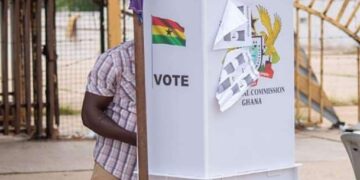 Members of the Ghana Institute of Freight Forwarders (GIFF) operating at the Aviance Cargo Village at the Kotoka International Airport (KIA) have outlined a litany of problems that they say has hit the new Classification and Validation System being implemented by the Customs Division of the Ghana Revenue Authority (GRA).
Members of the Ghana Institute of Freight Forwarders (GIFF) operating at the Aviance Cargo Village at the Kotoka International Airport (KIA) have outlined a litany of problems that they say has hit the new Classification and Validation System being implemented by the Customs Division of the Ghana Revenue Authority (GRA).
According to them, the challenges have slowed business, expressing fear of congestion at the ports of entry and costing importers demurrage.
The challenges include difficulty in logging in, the link being slow and the link going off frequently, which takes long to be restored.
Others are when documents are submitted, no reference number is provided to enable freight forwarders to track progress; agents cannot send documents per attached as was the case with Destination Inspection Companies (DICs), as well as processing of documents taking too long.
For example, some agents say they have submitted documents for more than a week but the Customs Classification and Valuation Report (CCRV) has not been received.
However, Pre-Arrival Assessment Report System (PAARS) statistics provided by Customs as of September 13, 2015 indicate that 482 Declarants were registered; 221 Gold Card (Fast Track) Declarants processed; 2,632 Customs Classification and Valuation Report (CCVR) Applications; 1,001 CCVRs Issued; 411 CCVRs issued within 48 hours; 500 Customs Daily Benchmark; and five backlog so far.
The CCVR, which replaces the destination inspection report, also known as the Final Classification and Valuation Report, started on September 1, 2015.
The PAARS service is being delivered from the Customs Technical Services Bureau.
Responding to the concerns of the Freight Forwarders, Mr Robert Nana Mensah, acting Assistant Commissioner of Customs in charge of the Communication and Public Affairs Department, told The Finder that the problem of slow link was a bandwidth issue, which has since been resolved.
On the complaint of no reference numbers, he said the Unit Consignment Reference (UCR) and Import Declaration Form (IDF) are the maintained references, and freight forwarder can track the status from PAARS.
According to him, communication was sent to all Registered Declarants and can also be found in the Help Menu.
He explained that these instructions are already online on the platform for any declarant to use in tracking the status of his declaration.
Mr Mensah refuted claims by the agents that they cannot send documents per attached as was the case with the DICs, explaining that the feature is even being enhanced further.
On delay of CCVR, he stated that there are current backlogs due to the bandwidth and Tax Identification Number (TIN) reconciliation, saying that should be back to normal this week.
He explained that the customs platform does not recognise the TIN used on the GCNet platform, and as a result, all users of the new platform were asked to register for new TIN.
However, he said some agents are imputing the old TIN numbers into the Customs system while others are imputing the new TIN numbers into the GCNet platform, which is causing delay in processing the documents.
To address the complaint that customs staff hang up on freight forwarders who call to follow up on their submitted documents, the acting Assistant Commissioner of Customs said the help desk would be optimised to take more calls.
The Customs Division on September 1, 2015 began the implementation of the National Single Window system, which serves as a common platform for stakeholders to process their documents to facilitate trade and reduce the cost and time in import, export and transit trade.
Under the system, Customs takes over the classification and valuation function, which was being handled by the DICs at the time.
The new system adopted a collaborative approach where customs, freight forwarders, brokers and other stakeholders work together to provide services to Ghana’s Trading Community, supported by service providers such as GCNet, West Blue Consulting and Scanning Companies.
The arrangement is to create a synergy that utilises the core competencies of each of the stakeholders to implement a seamless, efficient and user-friendly e-clearance regime in a National Single Window environment.
The Pre-Arrival Assessment Report (PAAR) system is an integrated and shared risk platform that would help overcome the inefficiencies in the current regime, including duplications, as a result of non-integrated systems, lack of real-time notifications to declarants and manual document processing of import transactions.
The system, utilising a robust risk engine, would assist authorised officials to perform a comprehensive assessment of imported goods, by classifying, valuing and risk assessing them, based on international standards and conventions.
To aid trader compliance and provide timely trade information to the public, an interactive trade information portal – www.ghanastradinghub.gov.gh – was launched as part of the programme on September 1, 2015 to aid compliance at source.


































